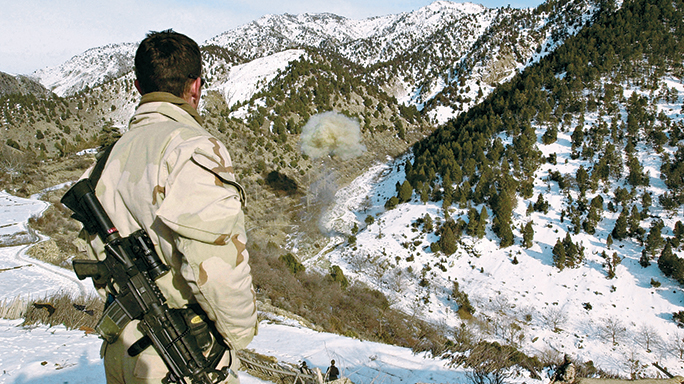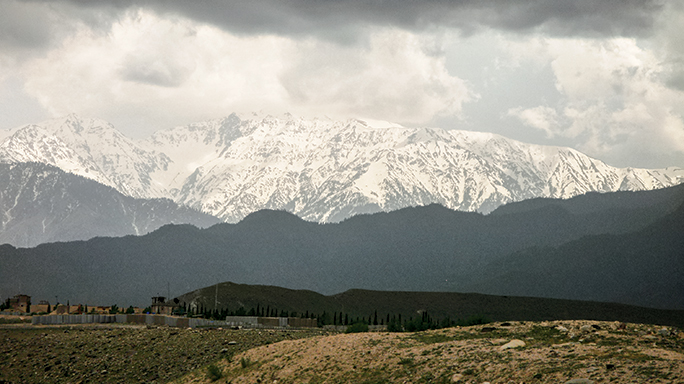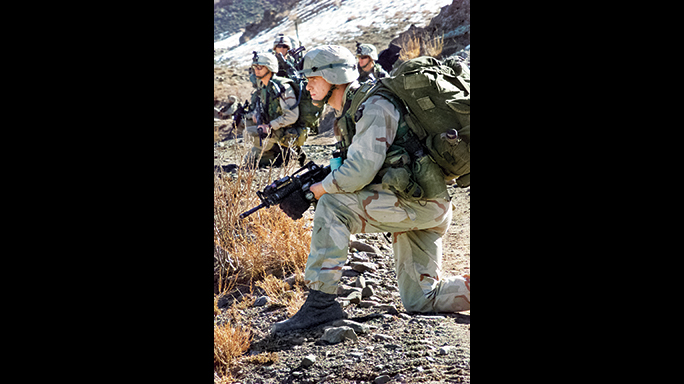Special forces in the town of Gardez began gathering intelligence on the remaining Al Qaeda and Taliban forces in the mountains of eastern Afghanistan in December 2001.
- RELATED STORY: Operation Red Wings: The ‘Lone Survivor’ Story
According to an analysis in The New York Times by Sean Naylor, one of the only journalists allowed to personally watch the operation, their information suggested a force of some 150 to 250 enemy fighters, armed with minimal weaponry and embedded among about 800 civilians in three villages on the floor of the Shah-i-Kot Valley. This force had apparently descended from the impenetrable mountains of Tora Bora to the north and was planning a counteroffensive against the provisional and still unstable government of Hamid Karzai.
According to Naylor, Operation Anaconda, while eventually deemed a moderate success in the sense that it succeeded in driving the enemy fighters out of the valley and ending the threat against Karzai’s government, was nonetheless far more costly and difficult than anticipated due to a number of critical intelligence errors.
Advertisement — Continue Reading Below
First, the fighters were concentrated on the mountain slopes more than in the valley; second, there were essentially no civilians in the valley at all; third, the enemy forces were far better armed than the intelligence had suggested, with mortars and artillery that they used to bombard the troops in the valley; fourth, there were more of them than anticipated; and finally, they did not turn and retreat as expected but stayed and fought fiercely, turning what had been thought to be a two-day operation into one that lasted more than two weeks.
In the end, the conventional Afghan troops and well-trained coalition forces — including soldiers from the U.S. 10th Mountain Division, 101st Airborne Division, and a variety of special forces (Navy SEALs, Army Rangers, CIA SAD forces, etc.) as well as British, Canadian, German, Norwegian, Australian, and Danish soldiers, with substantial assistance from U.S. air support — succeeded in defeating the enemy and inflicting substantial casualties on them.
Some estimates place the enemy dead in the hundreds.
Advertisement — Continue Reading Below
Eight American soldiers were killed, most of them during the fierce battle of Takur Ghar, a mountain peak where delays caused by equipment failure and communications problems from shifting frequencies resulted in an MH-47 Chinook helicopter attempting to land in a highly dangerous location — it was hit by two RPGs, and lost one of the SEALs on board, Neil Roberts, who fell out of the helicopter’s open ramp.
- RELATED STORY: Operation Rhino, Gecko: Tackling the Taliban in Afghanistan
Efforts to rescue Roberts and secure the peak produced similar problems, with another Chinook — this time the shifting frequencies prevented an AC-130 gunship from firing on the enemy before the helicopter’s arrival — coming under heavy fire, though the aircraft was able to land.
Coalition forces, many of them displaying exceptional courage, eventually won the day, but they were unable to rescue Roberts, who may have been killed, some evidence suggests — there are conflicting reports — only after fighting valiantly and single-handedly against a large force of pursuing enemy combatants.
Advertisement — Continue Reading Below
Just The Facts:
Dates: March 2–18, 2002
Location: Shah-i-Kot Valley, eastern Afghanistan
Advertisement — Continue Reading Below
U.S. Forces: Navy SEALS, array of conventional American forces
Enemy/Target: Taliban and Al Qaeda forces still hiding in the mountains



























